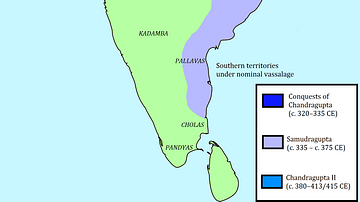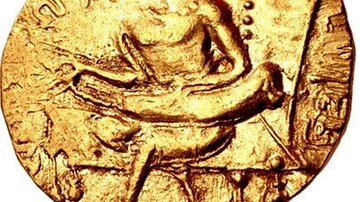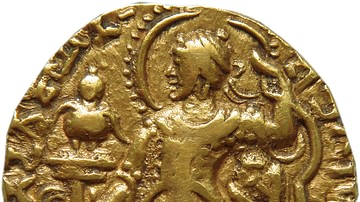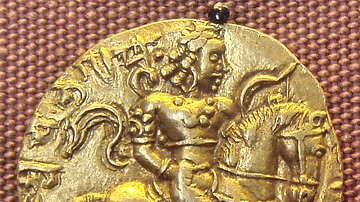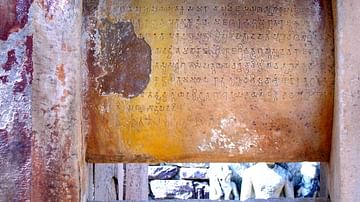Illustration
This map shows conquests made by emperors of the Gupta dynasty in the 4th century CE and early 5th century CE. Of these three rulers—Chandragupta I (320 – 335 CE), Samudragupta (c. 335 – 375 CE) and Chandragupta II (c. 380 – 414 CE)—Samudragupta’s conquests are the most important and the most extensive and formed the base for the further extension of the Gupta empire and the determination of its final extent.
Chandragupta II added to the empire territories primarily in western India after defeating the Shakas or Western Satrapas. His allies, the Vakatakas, were also a prominent dynasty at this time.
This map also shows other kingdoms in India that were either outside the Gupta empire or acknowledged its paramountcy. It is based on the map provided on p. 90 of Kulke, H.; Rothermund, D. (2004), A History of India, 4th, Routledge, ISBN 978-0-415-32920-0.
Cite This Work
APA Style
Avantiputra7. (2019, October 31). Extent of the Gupta Empire, 320-550 CE. World History Encyclopedia. Retrieved from https://www.worldhistory.org/image/11428/extent-of-the-gupta-empire-320-550-ce/
Chicago Style
Avantiputra7. "Extent of the Gupta Empire, 320-550 CE." World History Encyclopedia. Last modified October 31, 2019. https://www.worldhistory.org/image/11428/extent-of-the-gupta-empire-320-550-ce/.
MLA Style
Avantiputra7. "Extent of the Gupta Empire, 320-550 CE." World History Encyclopedia. World History Encyclopedia, 31 Oct 2019, https://www.worldhistory.org/image/11428/extent-of-the-gupta-empire-320-550-ce/. Web. 20 Apr 2025.



